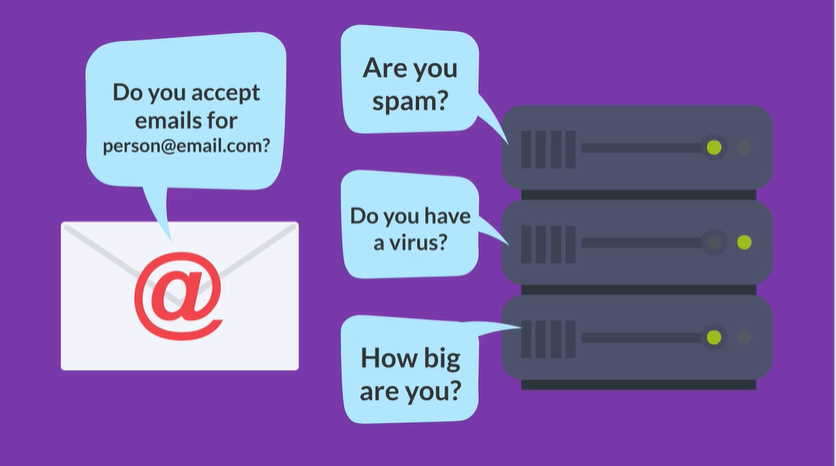There was a time in mid-March where I felt like I’d never get to write the following words, but they are finally true: the new Novice to Know-How (N2KH) learning pathway on Email Preservation is (nearly) done! I add the ‘nearly’ caveat for two reasons. First, there is a little work still to do on the additional resources that will accompany the main content (more on those later). Second, I don’t think I ever consider an online course truly completed until it’s in the Learning Management System (LMS) and the first learners have started! But a completed set of modules has been passed over to N2KH’s originators and funders, The National Archives (UK), so close enough…
This has been the most challenging of the N2KH projects to date, partly due to the ambitious timeline, but also because of the complexity of the topic. Most of the subjects covered in the original N2KH learning pathway were very familiar after more than a decade and a half of working in digital preservation and years of providing training through our “Getting Started…” and “Making Progress with Digital Preservation” courses. We did some brushing up on recent good practice publications, but developing the content was relatively straightforward. Creating a training course on email preservation, however, brought with it a much higher level of difficulty.
I had a familiarity with the topic thanks to taking part in training provided for DPC Members by Chris Prom, Ruby Martinez, and Tricia Patterson, but this was not enough of a foundation to build a course from. It’s definitely an important lesson I’ve learned in my time at the DPC, knowing about a subject, and knowing about it well enough to explain it to others are very different. Therefore, the research phase of this project was far more substantial than previous N2KHs. I assembled a long list of blogs, articles, reports, and media from events to allow me to get a real handle on the topic. I must at this point pause to give my thanks to Chris, Ruby, and Tricia for giving us permission to reinterpret content from their training course for this project. It was invaluable to have a ready example of how one might teach email preservation, including key points to cover.
The first output of the research phase was a draft structure for the learning pathway, setting out how it would break down into courses and modules. This evolved over the development of the learning materials, particularly in relation to the individual modules included, but its creation was an essential step in setting out the flow of the material and the learning outcomes. The content itself was developed over an eight week period in February and March. I focused on the core modules and Amy, our Training and Grants Manager, produced a set of excellent case studies, based on interviews with practitioners working in the trenches on email preservation. We consistently hear in feedback that learners love case studies, that they help them contextualize their learning, so we wanted to make these a key element of this N2KH learning pathway.
Given the size and complexity of the challenge of developing the course, we decided to take a particularly robust approach to content creation and review. For every module the content was: researched, outlined, drafted, reviewed by two colleagues (one each from the DPC and The National Archives (UK)), edited, formatted for online delivery, reviewed again by two colleagues, and final edits made. The screenshot of the review tracking spreadsheet included here will give you an idea of the scale of managing that process! We also undertook a pilot of a selection of the modules to test out the content with potential learners and incorporated their feedback into the development.

Image 1: The N2KH3 review tracking spreadsheet
Now it’s completed the learning pathway contains:
- 8 courses
- 41 modules that include:
- 3 videos;
- 3 case studies;
- 6 quizzes; and
- 7 tool/system demos
- And 42,150 words!
The learning pathway has been developed with learners who already have a solid foundation of digital preservation knowledge, and are looking to develop intermediate-level skills. It begins with an introduction to the reasons to preserve email and the key issues that need to be considered. The second part of the learning pathway delves into how email works as a technology, including structures, standards, and systems, as this provides important context for understanding preservation processes. The third focuses on fundamental aspects of establishing an email preservation program, touching on common approaches to organizational management of emails, advocacy, policy, legal contexts, retention plans, workflows, and an overview of tools and systems. Parts four to seven look in more detail at different stages of the email preservation lifecycle, from selection and capture, appraisal and processing, preservation, to discovery and access. Finally, part eight offers the three case studies mentioned above.

Image 2: Insight into the N2KH course content
As mentioned at the start of the blog post, we have also created a set of Additional Resources to accompany the learning pathway that learners will be able to download and keep. These include a full-text surrogate of the content, a glossary, a reading list, and a list of tools and systems that can help with email preservation. To help with advocacy there is also a “plain English” information sheet on email preservation whose content can be reused when working with email users. Finally, there is a small example email archive file and exercise sheet to give learners the chance to further experiment with the tool ePADD, which is covered in the learning pathway. Hopefully, the core content and these additional resources represent an interesting and useful learning experience that will equip learners with the skills needed to tackle email preservation!

Image 3: The new learning pathway also offers explainer videos
Now that development has been completed we’re planning for roll-out. There will be an online launch event for the learning pathway on Thursday 29th June and the first learners will start on 1st July. There will be more information on registering for the launch event and for access to the learning pathway coming soon. Make sure to keep an eye on DPC and The National Archives (UK) comms channels. In the meantime, don’t forget you can still register for the original N2KH Learning Pathway. The number of places available each month on this will be reduced when the N2KH: Email Preservation learning pathway goes live, so now is the time to register. Remember it is free to all, with priority registration for DPC members and those from the UK Archives Sector.
To finish up, I must offer my thanks to The National Archives (UK) Archives Sector Development team for the opportunity to develop this course, and their continued support of the digital preservation community. To the Amazon Music “[Re]Discover: 2000s Indie” playlist for being the soundtrack to N2KH: Email Preservation development. And to my Maw for supplying me with sustenance and support during the project, and for putting up with endless updates on how many modules were done and how many were left to go…













































































































































